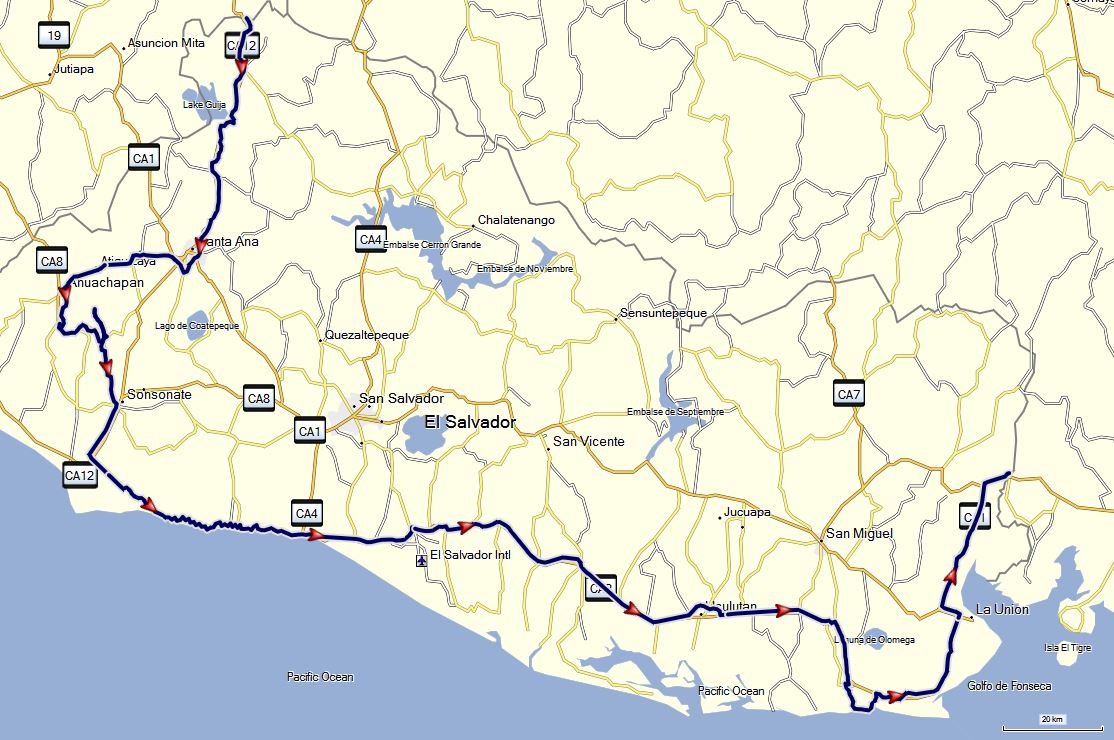Contents
Travel information
We drove about 275 miles (440km) during the more than two weeks we were in El Salvador. In the following section, there are a few tips for people taking an individual trip through El Salvador in their own vehicle.
Visa
The C4 stamp from Guatemala is valid; passports were not stamped. There was no cost for entry.
Health insurance
For our entire trip, we took out family travel insurance from STA-Travel, which had the best cost-quality ratio compared to other providers. It is especially important to ensure that there are not any high deductibles.
Vehicle
Vehicle importation was quite simple, and we didn’t need any help. The chassis number was checked, and there were various forms to fill out. Vehicle import was free of charge. We didn’t get gas, but we saw a lot of gas stations. The cost for diesel is considerable higher than in the neighboring countries.
Driving
The streets in El Salvador are in excellent condition; even minor streets are tarred and virtually free of potholes. Traffic is laid-back; there is less speeding and breakneck passing. Due to the many non-motorized means of transportation, however, the possibility of obstacles always has to be taken into account. We found driving in El Salvador very relaxing.
Eating and drinking
The supply of food is at the U.S. level, sometimes even price-wise. In addition, good fruit, vegetables, and fish can be bought from pick-ups along the street, where the prices are very low. Along the coast, there are great fish restaurants. The national dish is pupusas, hot stuffed pasta pouches. Drinking water is sold in shops or from pick-ups.
Safety
El Salvador has a bad reputation of being full of robbers and murderers, but it has changed a lot and can be traveled through by tourists very well. There are bloody clashes between youth gangs (maras), but outsiders are usually not affected. It is important to listen to what areas the locals tell you to avoid. We felt very comfortable and safe in El Salvador und would return there any time.
Climate
We were there in January, and it was hot and dry. In the mountains, the climate is pleasant, and it is cool at night. Along the ocean, it is very hot during the day, and we always had a pleasant breeze at night.
Tips for traveling with children
There are lots of children, and, in contrast to the other countries in Central America, you see them playing on the street. At beaches, there are often a lot of children playing together, and each one watches out for the other while the adults there share the supervision. In shops, you find a big selection of items for babies and small children, and the Salvadorians are very attentive when it comes to children. The infrastructure and the nature of the local people make traveling with children very pleasant.
Places to spend the night
Here is a map with all of our overnight stays in Central America.
Here is a list of each place with GPS coordinates, cost, and commentaries.
Here is the accompanying gpx-file for downloading.
Wild camping is not recommended unless the locals give permission. When it comes down to it, outsiders don’t know which areas can be the scene for conflicts and where they can suddenly find themselves in the middle between two fronts. There are designated camping sites, and you can also get permission to spend the night in front of hotels und restaurants.
Blog Entries
Picture Galleries
- Ruta de las Flores
- El Zonte one and two
- Playa El Cuco

Recent Comments